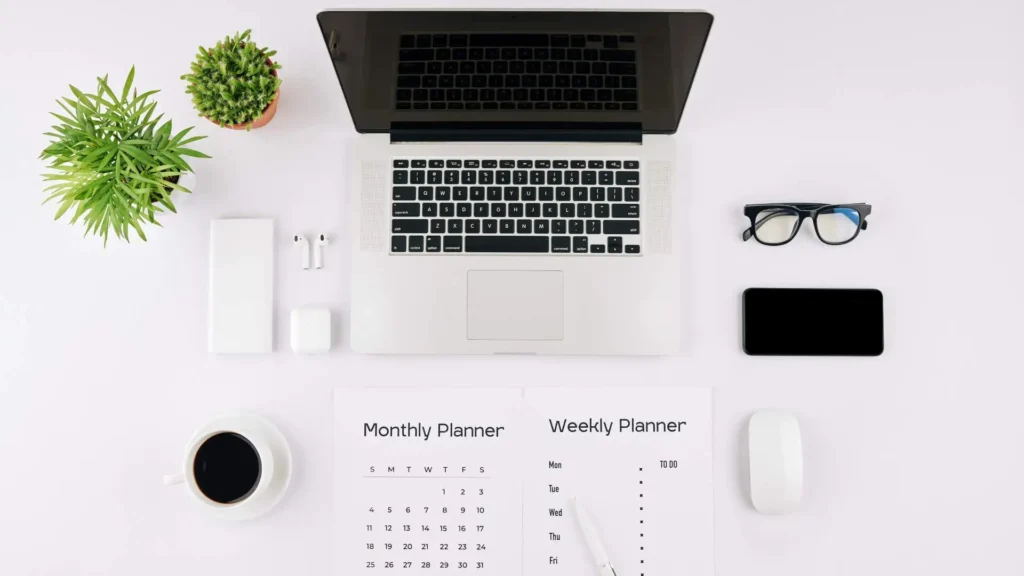Ever looked into your account and found that your balance went way lower than you hoped? It’s stressful, particularly when bills, food, and rent are all competing for your cash. But with a monthly stability plan and BudgetGPT, you can finally have a stable and stress-free lifestyle.
BudgetGPT helps to monitor your income, expenses, and consumption patterns to help you create a monthly stability plan. It ensures less surprise, no last-minute nervousness, and a bank balance that holds for the month.
With simple insights and smart recommendations, BudgetGPT assists you in creating a buffer, being one step ahead of bills, and avoiding overdraft charges. In this guide, we’ll take you through how to create a monthly stability plan for your account balance using BudgetGPT.
Ready to stop guessing and begin budgeting intelligently? Let’s get started.
What Is a Monthly Stability Plan?
A monthly stability plan is a simple way to keep your banking steady each month. It is meant to ensure that your essential expenses are always met while preventing you from overdraft charges, money stress, and surprises.
A stability plan lets you stay ahead by monitoring your income, expenditure, and routines in a clever manner instead of responding to financial problems. Here are some benefits of building a monthly stability plan:
1. Peace of Mind
Knowing that your account will always have enough money for your needs reduces your concern. A steady balance simplifies daily life and lowers stress from unforeseen bills or unexpected payments.
2. Fewer Surprises
Staying ahead of deadlines and major costs is made possible by a stability plan. You are not caught off guard since you know what is coming. This gives your finances more reliability and safety.
3. Better Budgeting
Your income and expenditures are better arranged with a stability plan. You can arrange in advance with certainty and guarantee your spending reflects your values. This results in more intelligent decisions and enhanced outcomes.
Knowing your spending patterns and creating a buffer will help you to stay above your balance. This shields you from overdraft charges and missed payments that damage your budget and tranquility of mind.
5. Easier Saving
Saving gets simpler once your requirements are met and your account remains steady. Without anxiety, you may begin constructing an emergency fund or even setting aside cash for something enjoyable.
Assessing Your Current Account Balance Trends
In order to establish a stability plan, you must first see how your funds flow. When you know your patterns, it is simpler to prepare for the future and stay away from drops that create tensions. Here is how you can access it:
Reviewing Past Statements
Begin by checking your bank statements from the last 3 to 6 months. Look at how your balance changes each week. You’ll likely notice times when it drops suddenly or rises just before a paycheck. These ups and downs are your money pattern.
Here are a few things to focus on:
- Look for the lowest points each month. These show when your account is at its weakest.
- Find the highest points immediately after income is added, like paychecks, allowances, or refunds.
- Pay attention to regular payments like subscriptions, phone costs, or rent. See when they hit your account and how much they affect your balance.
Spotting Instability Triggers
Once you’ve reviewed your past balances, figure out what causes the drops. These are your triggers, the events that shake your account and make it more difficult to stay steady.
Common causes of instability to look out for are:
- Like tuition or rent, big bills that fall once a month or once a semester.
- Unstable earnings if you work freelance, part-time, or earn on various days every month.
- Many times, without realizing how often it occurs, overspending is particularly common on food delivery, entertainment, or buying apps.
Knowing these triggers enables you to modify your strategy, prevent unexpected developments, and maintain a constant balance for your account for the month.
Setting Up Monthly Stability Plan for Your Account Balance
Once you know your balance patterns, the next thing to do is create a plan that maintains your account level. This means figuring out how much you need for key costs, making a small safety net, and setting up auto payments so nothing is missed. Here’s how to start:
Calculating Essential Expenses
Start by writing down all your fixed monthly costs. These are the bills you must pay every month, no matter what. Knowing your essential spending helps you figure out the minimum balance you should never go below.
Here’s what to include:
- Rent or housing fees
- Bills like power, water, and internet
- Food and daily eats
- Regular fees (like your phone bill or student tools)
Once you total these up, you’ll know the base amount your account should always have to cover your needs.
Interesting Read: Weekly vs. Monthly Budgeting for College Students
Building a Buffer
A buffer is extra cash you keep in your account for safety. It saves you from overdraft fees and lets you relax if anything unexpected shows up. Start with $10 to $30 and put it gently. It grows quickly and lets you feel more sure about your cash.
Automating Income and Payments
Put your pay straight into your bank. This means you won’t have to wait for your money—it will automatically be added to your account. This saves you time and keeps you on time with your spending plan.
Also, automate your bill payments so you don’t have to pay each one manually. To maintain your account balance constant, match payment dates with your paydays. This greatly simplifies your budget plan and reduces the possibility of late fees.

Monitoring and Adjusting Your Plan
When the monthly stability plan is established, it is important to monitor the progress and adjust as needed. Regular check-in helps you stay on track and prevent small problems from becoming major problems.
Weekly Check-Ins
Take a few minutes each week to look at your bank amount and what you’ve spent. Also, you can use apps to watch your cash flow and spending easily. These apps show where your cash is going and if there’s a spending issue or odd costs.
If you spend too much or your buffer gets smaller, adjust it. To guarantee your balance stays steady, think about limiting nonessential purchases or boosting your savings. Checking your plan often puts you in charge of your cash.
Handling Unexpected Expenses
Things may be wrong at any time, but don’t let them ruin your plan. Divide a portion of your savings for unexpected costs such as medical bills, vehicle repairs, or other unplanned expenses.
If a sudden cost hits, use the savings that you keep aside, not your whole income. If you run out, cut back or save more for a while to refill it. This keeps your bank account ready for anything. Here’s more about The Hidden Costs of College Life (and How to Prepare).
Benefits of Monthly Account Stability
Keeping your bank account stable each month helps you manage money more easily. With a good plan, you can be ready for a surprise, save without concern, and may be more responsible for finances, even a tight student on a budget. Here are some benefits:
Less Stress
A steady bank stops you from worrying about last-minute payments or being broke before payday. It lets you relax, making daily choices, like eating out or paying bills, much easier.
Avoid Fees
Overdraft and late fees can drain your budget in a matter of time. A steady account ensures these charges do not occur by ensuring you have just enough to pay the necessities when bills are due or unexpected situations arise.
Better Planning
With consistent cash flow, it’s simpler to pay. Be it saving for books, weekend outings, or long-term objectives, you know how much is at your disposal and can make wiser choices without doubting every move.
Safe Buffer
Each month brings stability that allows you to create a buffer. The little cushion of security allows you room for unexpected expenses without disrupting your entire budget. It’s your contingency in case things don’t go exactly as expected.
More Control
Knowing where money’s coming and going keeps you in control. You’re not playing catch-up on low balances or surprise bills—you’re on top of them. This control makes handling money possible, not intimidating.
Consistent Saving
It is difficult to save when your balance is uncertain. An established account allows you to put money aside, even small amounts. Gradually, those savings add up and enable you to accomplish greater things without stress.
Smarter Spending
With a clear view of your bank, you’re less likely to overspend. You know your limits and dodge impulse buys that you might regret. A balanced approach strengthens habits for your future.
Also Read: How to Financially Prepare for Study Abroad
Conclusion
Keeping your bank smooth doesn’t need to be hard. With Blitzmoney, you get smart tools like BudgetGPT that track flow, auto-pay bills, and build a backup without stress. No spreadsheets, no panic, just smoother spending and way fewer “low balance” alerts.
Ready to feel more in control of your money? Download Blitz now and let BudgetGPT help you build your monthly stability plan. It’s a simple way to dodge overdrafts, cover needs, and still have cash for treats, friends, or late-night orders.
Let your money be calm, steady, and much less messy. With Blitz, staying balanced just fits into your life—no stress required.




